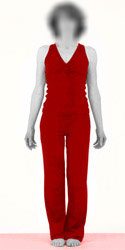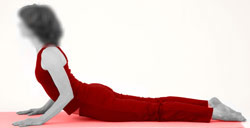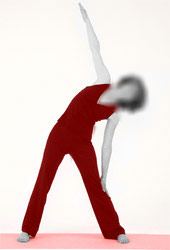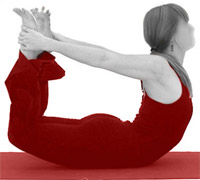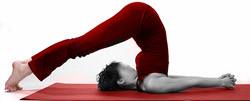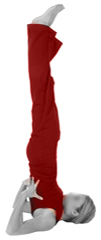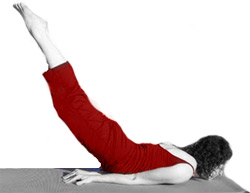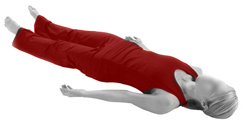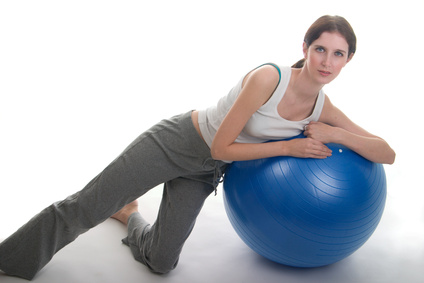Yoga For All
Over the years Yoga has been evolving to meet the needs of all – from good health to curing different illnesses right up to self-realization. Hatha Yoga the most popular Yoga in America as well as many other parts of the world continues to grow, develop and flourish. This is that branch of Yoga that focuses upon physical health and welfare and believes that our bodies are nothing but vehicles of the spirit. A number of different Yoga styles, all of them rooted from Hatha Yoga have evolved and continue to thrive all over the world today. The aim is to heal the body, balance the mind, and bring about union between body, mind and spirit through the practise of asanas or poses, pranayamas or breathing.
Styles of Yoga
All Yoga Styles have common roots, all of them originating in India. As a matter of fact, the creators of the 3 major styles — Iyengar Yoga, Ashtanga Yoga and Viniyoga Yoga or Flow Yoga all happened to be students of one Sri Krishnamacharya, a celebrated Yoga practitioner and teacher from Mysore in India. The two other styles developed by disciples of the well-known Swami Sivananda, are Sivananda Yoga and Integral Yoga. Whatever style you go in for, is a matter of need or personal choice.
The different schools and styles of Yoga are as follows:
Ananda Yoga
Ananda Yoga is a classical Hatha Yoga style that makes use of Yogasana (poses) and Pranayama (breathing techniques) to arouse and start to control the subtle energies within yourself particularly those of the Chakras in order to experience peace. The objective of Ananda Yoga is to utilize human energies to harmonize the mind, body, and emotions. Above all, it aims to attune the practitioner with higher levels of awareness. This is more of a gentle, inward experience unlike any aerobic or athletic practice.
Anusara Yoga
Anusara Yoga was founded in 1997 by one John Friend. This is a robust Hatha Yoga style that combines the Tantric philosophy of inherent goodness with the Cosmic Principles of right alignment. Here, practitioners of all levels of aptitude and skill discover the yoga experience feel great despite unique limitations, differences, and skills. Anusara is a graceful way of aligning the non-dual philosophy with a set of principles.
Ashtanga Yoga
Ashtanga Yoga is the perfect Yoga style for people looking for a serious workout. This style was developed by one K. Pattabhi Jois, and is a rather demanding physical style. Practitioners are made to move through a set of flows, skipping from one pose to another with a view to build flexibility, stamina and strength. This style is definitely not for beginners to Yoga or for those who have a relaxed approach to fitness. This style involves a challenging sequence of postures with synchronized breathing and a flow of Yoga pose.
Bikram Yoga
Bikram Yoga is the brainchild of one Bikram Choudhury, who learnt Yoga from Sri Bishnu Ghosh. Bikram Yoga is done in a room with temperature up to 100 degrees Fahrenheit, so you must be ready to perspire a lot. Every Yoga pose is usually done twice and retained for a fixed period. Bikram Yoga sessions usually begin with standing postures, then go into backward bends, forward bends and, finally, twist. The postures are accompanied by Kapalabhati Breath also called “breath of fire”. This Yoga style is “scientifically” designed to warm and stretch the ligaments, muscles and tendons in the way they ought to be stretched.
Integral Yoga
Integral Yoga lays equal stress on the Pranayama (breathing exercises), Asanas (physical postures) and Meditation. Integral Yoga was created by Swami Satchidananda, who also introduced chanting to the crowd at the Woodstock festival. Integral Yoga has also been proven therapeutic in as much as it has worked wonders in curing a variety of ailments, particularly Heart Disease.
Integral Yoga revolves around the practice of 8 main goals:
Integral Yoga revolves around the practice of 8 main goals:
1. Physical Health and strength
2. Control over the senses
3. Calm, clear and a well-disciplined mind
4. Higher level of intellect
5. Strong will power
6. Love and compassion
7. Lesser ego, and
8. Ultimate joy and peace.
2. Control over the senses
3. Calm, clear and a well-disciplined mind
4. Higher level of intellect
5. Strong will power
6. Love and compassion
7. Lesser ego, and
8. Ultimate joy and peace.
Iyengar Yoga
Iyengar Yoga has been named after its founder Sri B.K.S. Iyengar one of the most renowned Yoga teachers in the world. This style of Yoga is known for its precise alignment of postures and attention to detail. B.K.S also popularized the use of props such as Yoga belts and blocks to make the practices easier. His great attention to postural alignment and detail has come to be the most distinguished traits of Iyengar Yoga.
In Iyengar Yoga you hold the poses longer and repeat them several times. You can move to Pranayama (the breathing techniques) only after you have achieved a certain level of mastery of the postures. Iyengar Yoga props help practitioners achieve the best results possible as well as minimize the risk of getting injured while providing optimum support.
Sivananda Yoga
Sivananda Yoga was created by Swami Vishnu Devananda who is responsible for one of the greatest Yoga classics in modern times titled “The Complete Illustrated Book of Yoga”. This work was first published in 1960, and still continues to be among the best Yoga books available. He termed his style of yoga Sivananda Yoga after his mentor, Swami Sivananda , also one of the most renowned Yogis in the world. Sivananda Yoga lays more emphasis on the classic asanas (poses), Pranayama (breathing techniques) and Relaxation. It also focuses a lot on Positive Thinking, Meditation and Yoga Diet.
Other Yoga styles popular in the world today include:
- Bharata Yoga
- Jivamukti Yoga
- Kripalu Yoga
- Kundalini Yoga
- Svaroopa Yoga and
- Viniyoga or Flow Yoga

